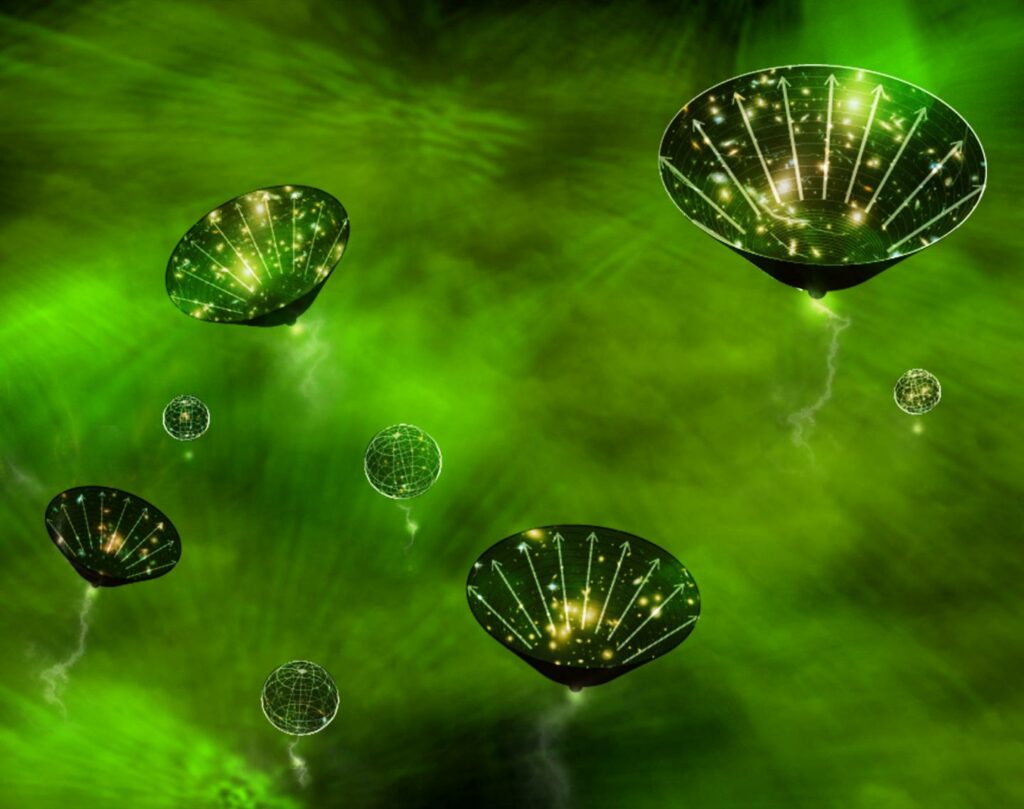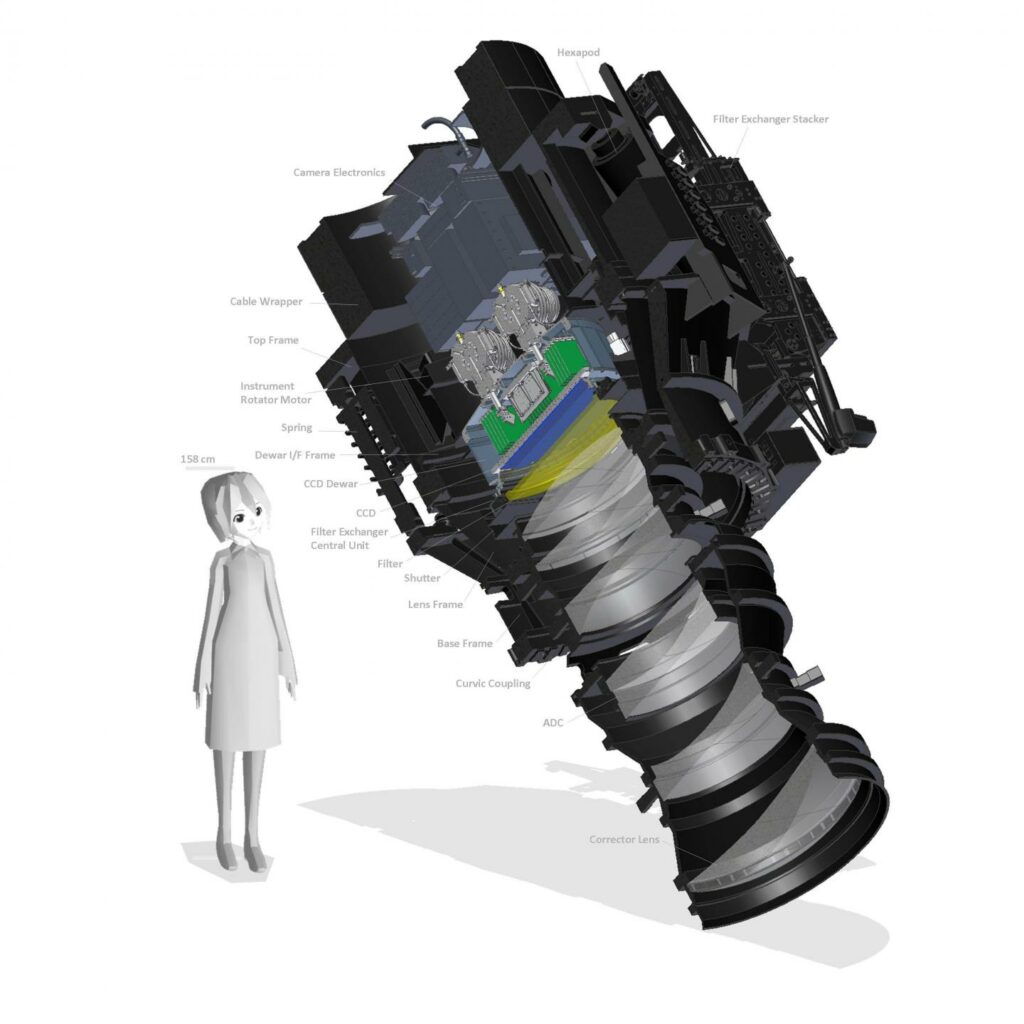Before the stars and galaxies even began to form in the early Universe, some researchers believe that the cosmos could have been occupied by a multitude of tiny primordial black holes. These purely hypothetical black holes would have formed in a radically different way than larger and more familiar black holes which physicists, cosmologists, and astronomers have confirmed to exist.
Whereas larger black holes form as a result of the death of massive stars, primordial black holes would have been born immediately after the ‘Big Bang’ when areas of high density underwent gravitational collapse. Despite having a long history in theoretical physics, primordial black holes had moved out of favour, that is until recently.

Now researchers from the Kavli Institute for the Physics and Mathematics of the Universe (Kavli IPMU) — including Kavli IPMU members Alexander Kusenko, Misao Sasaki, Sunao Sugiyama, Masahiro Takada and Volodymyr Takhistov — are studying the possibility of such objects existing both in the early Universe and in our current epoch.
The team believes the discovery of primordial black holes could point to a potential multiverse, with other ‘baby universes’ born alongside our own. Meaning that behind the event horizon — the point at which not even light can escape — of these primordial black holes could lurk an entire universe, hidden from view.
The scientists’ findings are documented in a paper published in the journal Physical Review Letters.
Beyond the discovery of these early black holes themselves, such an investigation could answerquestions surrounding many lingering and mysterious aspects of physics.
Primordial Black holes and Lingering Mysteries
The team believes that the existence of primordial black holes could account for a small amount of the gravitational waves detected at the LIGO/VIRGO interferometer. Until recently, this had been ruled out as primordial black holes existing binary pairs should result in more gravitational-wave signals than we currently detect.
Recent research has begun to illustrate how primordial black holes could exist and still produce gravitational wave signals that conform to the number detected at LIGO.
Such objects could even explain how some heavy elements are synthesised. Should primordial black holes exist, they could either collide with neutron stars — obliterating them — or infest the centres of such stellar remnants and ‘eat them’ from the inside out. Either of these processes would lead to the release of neutron-rich material would be released.

The synthesis of heavy elements has puzzled astrophysicists for some time, as the processes behind it rely on the presence of large numbers of neutrons, meaning primordial black holes could play a key role in providing such neutron-rich conditions.
Perhaps more exciting than this even; the team’s research could reveal if primordial black holes comprise the majority of dark matter — the mysterious substance which makes up between 80–90% of the Universe’s total matter content.
The idea that primordial black holes could account for dark matter — or at least some of it — isn’t a new idea. But, like the discussion of these objects themselves, theories connecting them to dark matter have also fallen out of favour over recent years.
In order to discover primordial black holes, the Kalvi team used the Hyper Suprime-Cam (HSC) of the 8.2m Subaru Telescope, a gigantic digital camera at the summit of Mount Mauna Kea, Hawaii to study the early Universe for clues.
Searching the Early Universe for Primordial Black Holes
Because the early Universe was so dense, it would take only a small density fluctuation of around 50% to create a black hole. This means, that whilst the gravitational perturbations that created galaxies were much smaller than this, there are a variety of events in the early cosmos that could have triggered the start of such a genesis event.
One such process would be the creation of a small ‘daughter universe’ branching off from our own universe during its initial period of rapid inflation. Should this baby universe collapse a vast amount of energy would be released within its small volume, thus giving rise to a tiny black hole.
This idea of branching Universes gets even stranger, however, should one of these baby-universes reach and exceed some critical size. General relativity suggests that if this was to happen the universe in question would exist in a state that appears different from the inside than it does from the outside.

An observer from with the baby universe would see it as an expanding universe, whilst an observer outside the event horizon would see the baby universe as a black hole. This means that in both cases, the event horizon of the primordial black hole hides its internal structure — and an entire universe.
The team’s paper points to a scenario in which primordial black holes are created by this nucleation of what they term ‘false vacuum bubbles.’
The fact that primordial black holes have thus far escaped detection indicates it is going to take an extremely powerful instrument to see the Universe in such a way that these multiverse camouflaging objects can be spotted.
Fortunately the HSC fits the bill.
The Hyper Suprime-Cam sees the Big Picture
As the paper’s authors describe, thanks to its unique capability to picture the entire Andromeda galaxy every few minutes, the HSC could be the ideal instrument to capture primordial black holes. This imaging can be achieved with the aid of gravitational lensing, the curvature of light by an object of great mass.

As a primordial black hole passes the line of sight to a bright object such as a star, the curvature it causes in spacetime results in a momentary brightening of the object or an apparent shift in position.
The greater the mass, the more extreme the curvature and thus the stronger the effect meaning that the astronomers can measure the mass of the lensing object. This effect only lasts an extremely brief time, however.
Because the HSC can see the entire galaxy, it can simultaneously observe up to one hundred million stars — giving astronomers a good chance of catching a transiting primordial black hole.
The team have already identified a prime candidate for a ‘multiverse’ hiding primordial black hole in the first run of HSC observations. The object had a mass around that of the Moon and has inspired the team to conduct further observations, thus widening their search and possibly finding a solution to some of physics’ most pressing mysteries.
Original Research
Kusenko. A., Sasaki. M., Sugiyama. S., et al, [2021], ‘Exploring Primordial Black Holes from the Multiverse with Optical Telescopes,’ Physical Review Letters, [https://doi.org/10.1103/PhysRevLett.125.181304]





